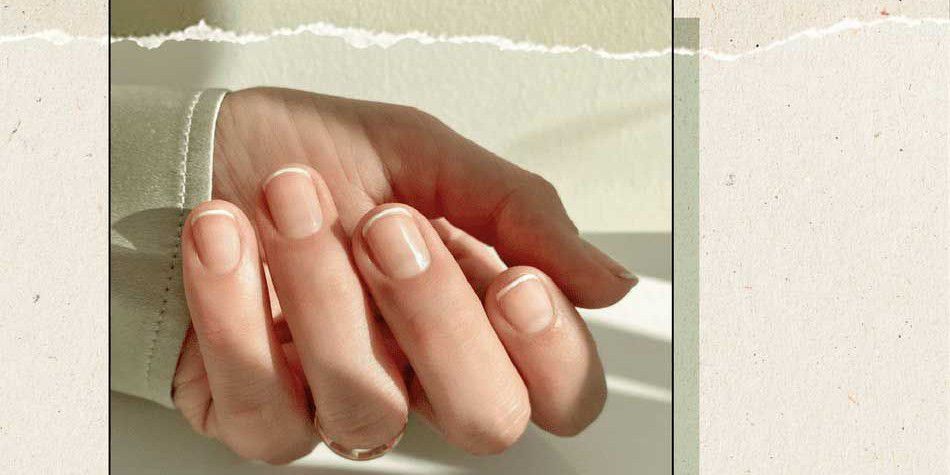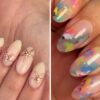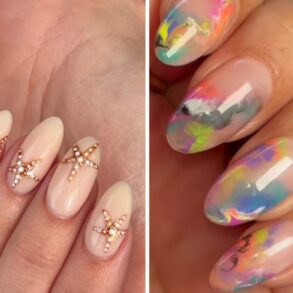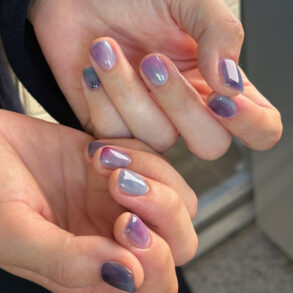
If you hear the words “French manicure” and still picture your high school prom, you may be surprised to hear that French tip nails are very much back. Though there are some differences in the modern iterations of this nail style, the gist of the trend remains the same.
“Any design that incorporates a different color that’s painted on the free edge of the nail is a type of a French manicure,” nail expert Dasha Minina told us. “Many different designs, color patterns, and textures can be incorporated to make a unique version of the French manicure. Recently, nail shapes started playing a role, too.”
Still, asking for nail art and doing your own can be intimidating, especially when you consider how many styles of nails — acrylics, gel extensions, powder, dip, gel, shellac, etc. — exist. To get you started, we spoke to Minina and nail artist Kimmie Kyees to explain everything there is to know about mastering the art of the French manicure.
meet the expert
- Dasha Minina is a nail technician and the founder of Maxus Nails and BeauticianList.
- Kimmie Kyees is a celebrity manicurist. Her celebrity clients include Rihanna, Adele, and Salma Hayek, among others.
Keep scrolling for how to DIY French tip nails in five easy steps.
Prep Your Nails
When it comes to DIY manicures, don’t rush the process. For best results, you’ll want to prep your nails first, removing any old nail polish. Consider using an acetone-free polish remover to clean nails sans damage. Then, cut and file your nails to the desired length and shape. Traditionally, short to medium-length square or almond-shaped nails were the preferred choice for French manis — but don’t let that limit you. With today’s modern French tip nails, anything goes.
To help your manicure last longer, gently buffer your nails before applying polish. Buffing removes any ridges, oil, and buildup, thereby allowing polish to better adhere to your nails.
Apply a Base Coat
Once your nails are prepped and shaped, apply a base color of polish. We’re partial to Essie Strong Start Base Coat ($9). Not only will it prevent nails from getting stained and create long-lasting color, but it will also work to keep nails strong.
Paint Your Tips
Next, you’ll need to paint the tips of your nails. According to Minina, the key to creating a crisp, clean smile line (the contrasting color at the top of the nail) is to use proper design brushes — like Olive & June Nail Art Brush Set ($16) — during the process. In terms of polish color, white options like Static Nails Liquid Glass Lacquer ($16) in Elixir is the classic choice, but feel free to experiment with bolder, eye-catching shades to modernize this look.
Consider Nail Strips
If the idea of professional nail brushes or drawing a perfectly straight line of color on the tip of your nail intimidates you, there are simpler options.
“The easiest and most perfect form of French tip at home would be to try Color Street Nail Polish Strips ($22),” said Kyees. “They’re pre-made, pre-dried, super easy to apply, and they will give you the perfect smudge-free French manicure every time.”
Apply a High-Quality Top Coat
Another game-changing hack is to use a very good top coat.
“Maxus Nails Finito Top Coat ($18) is a fast-drying formula that’s ideal for nail designs [as it] doesn’t drag polish during application,” Minina shared. This is an important, final step that will keep your nails protected, helping to prevent chipping and prolong your manicure.
Frequently Asked Questions
-
When someone says they want French tips as opposed to a French manicure, Minina said it likely means they want artificial nail tips, which are already painted with a white tip. A French manicure, however, is when the tips of the nail are painted a different color than the rest of the natural nail.
-
Yes. Traditionally, a French manicure would mean a white tip with a nude or pink base color; however, more modern styles include colored tips, designed tips, micro-thin, and even negative space French manicures.
-
Consider your skin tone when choosing a base color polish. For example, a sheer pink shade will give those with lighter skin tones a natural-looking French manicure, while those with darker skin tones might prefer a deeper nude.
This post was originally published on this site be sure to check out more of their content.






